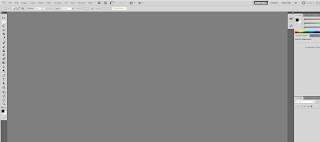Looking back at your preliminary task, what do you feel you have learnt in the progression from it to the full product?
 This is my preliminary task college newsletter which I called Edge Bede. I did this around september time, I had no knowledge of making a newsletter and I created it on Microsoft Office Publisher, which is a basic program which is not used to create professional magazines. I made this newsletter without any help from my teacher or any further knowledge of the conventions of magazines.
This is my preliminary task college newsletter which I called Edge Bede. I did this around september time, I had no knowledge of making a newsletter and I created it on Microsoft Office Publisher, which is a basic program which is not used to create professional magazines. I made this newsletter without any help from my teacher or any further knowledge of the conventions of magazines. As I have already said, when doing my preliminary task, I used a Microsoft Office Publisher to create my cover and contents page, this meant that the quality of my finished task was not as good and professional as my coursework music magazine. This is because for my coursework I used Adobe Photoshop which is a piece of software that professional editors of magazines use. This meant that I could make my magazine look very professional and to a high standard. I did this by editing the photos that I used and even just by positioning things in different places, which is one of the things that I really struggled with when using Publisher as it is very limited as to where you can put things.
As I have already said, when doing my preliminary task, I used a Microsoft Office Publisher to create my cover and contents page, this meant that the quality of my finished task was not as good and professional as my coursework music magazine. This is because for my coursework I used Adobe Photoshop which is a piece of software that professional editors of magazines use. This meant that I could make my magazine look very professional and to a high standard. I did this by editing the photos that I used and even just by positioning things in different places, which is one of the things that I really struggled with when using Publisher as it is very limited as to where you can put things.
I also used effects on the text throughout my magazine which really helped to give it a professional look and feel. I have also learnt how to work with layers on Photoshop making the finish of my coursework to a higher standard as it allowed me to place things on top of one another.
All in all, I think that I have made huge progress from my preliminary task to my final coursework magazine, I have used better a better program to produce and edit my magazine and I have used the feedback I was given from my first task to help me in the production of my music magazine, this has helped me make it into a good final product




















